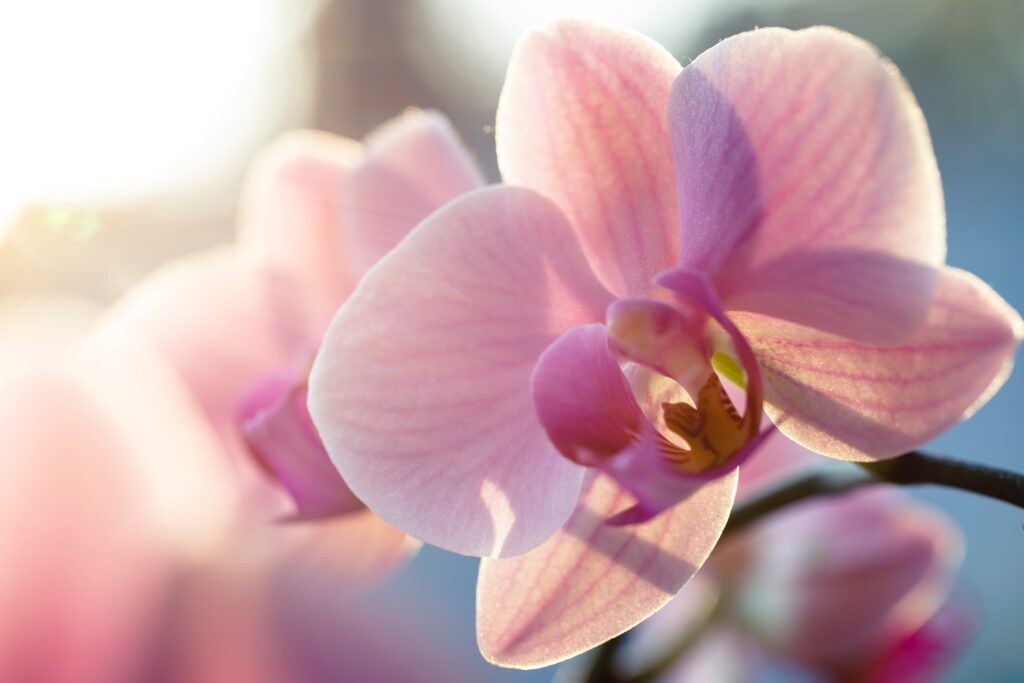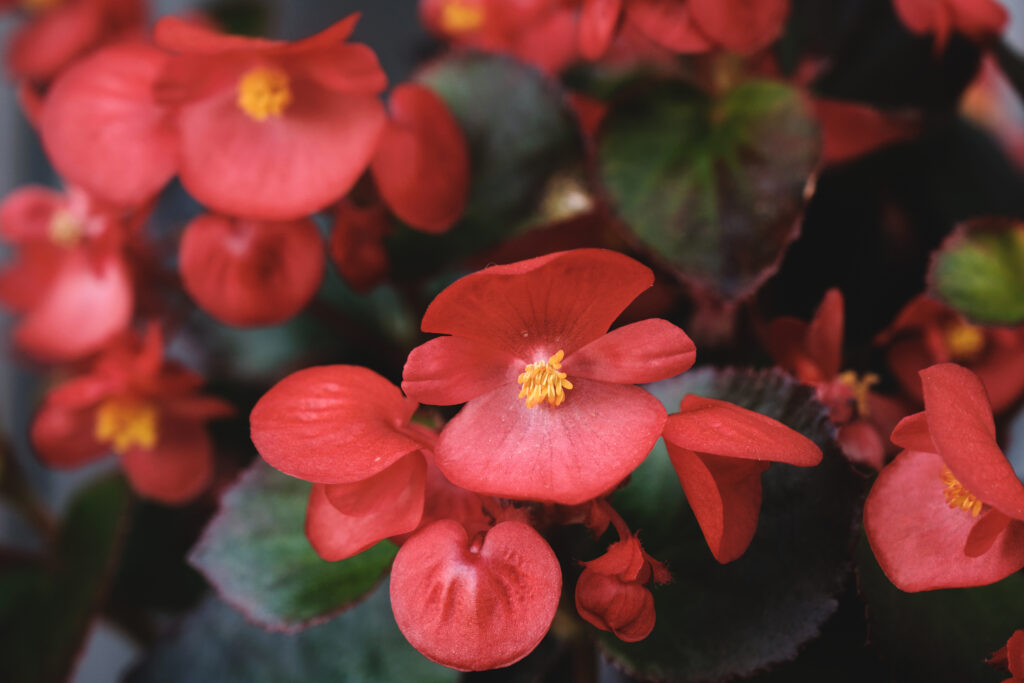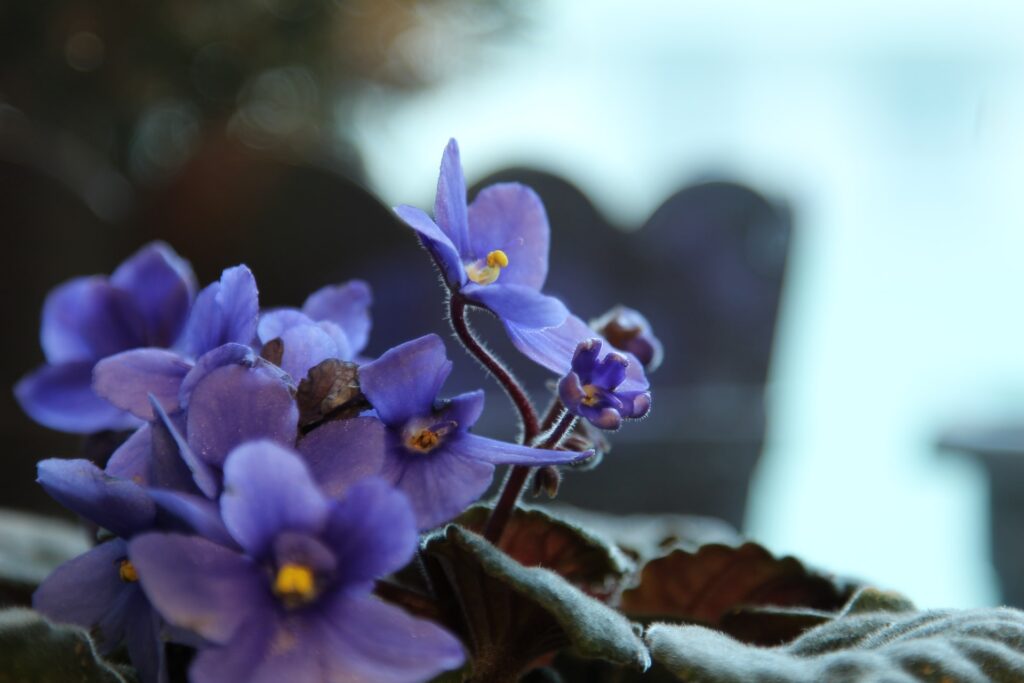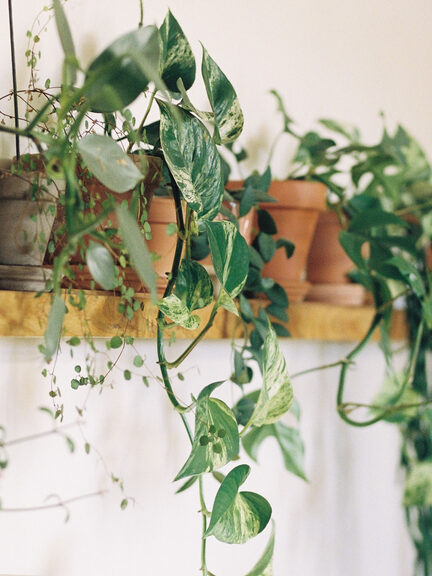When did summer arrive? We know it’s not officially the start of the season just yet, but it sure feels like it. While the world outside may be growing at an impressive rate with dainty flowers and lush foliage we are taking a quick look inside our homes. The summer calls for us to be outside as much as possible, however, the weather is not always cooperative. Between extreme heat or rolling thunderstorms there are indeed moments spent in the home. And so, this is the first part of a mini-series on bringing life into your homes. Today, with a special emphasis on colour.
Are you ready to have your home in full bloom this season? We’ve gathered a few favourites to bring some colour to your spaces!
African Violet (Saintpaulia ionantha)
For shades of rich violets, lilacs and pinks
Blooming year round, the African Violet thrives in bright, indirect light. The delicate leaves and flowers bring a rich pop of colour and charm to any space. They are fairly easy to care for even though they have a unique set of requirements.
LIGHT: Bright, but indirect, the leaves of the African Violet can easily burn!
WATER: Every 3-5 weeks, but humidity is important. Select a location that has higher humidity, near kitchens and bathrooms for example, or add a pebble tray under your pot that can be misted a few times weekly.
SOIL: No soil! African Violets do best in mixtures of fast-draining, loose and porous mixtures.
TEMPERATURE: Keep plants in a range between 15˚C to 27˚C, be weary of drafts because like many of us, the African Violet doesn’t like to catch a chill.
FERTILIZER: Once every 3-5 weeks. Most fertilizers call to be diluted in water so it’s best to combine your monthly watering with your fertilizing.

Moth Orchid (Genus Phalaenopsis)
For shades of soft and vibrant pinks, whites, deep yellows and magentas
There are thousands of orchids in a variety of shapes and sizes and in almost every colour. But among the masses there are a few that do extremely well in our homes. Orchids are epiphytes, meaning that in the wild they grow on other plants and absorb their water and nutrients from the air. It’s why you generally see orchids in a bark mixture and not in soil! The moth orchid, commonly found in grocery stores is a versatile and beautiful option.
LIGHT: Bright indirect light. Select a sunny area either east or west facing to ensure your orchid receives ample light without overloading them.
WATER: Once a week. Orchids don’t like to have wet feet, so the best watering practice is to let them “drink” for about 30 minutes each week. Remove the orchid with its plastic pot out of your decorative pot and place them into water. This allows the orchid to drink what they need while they have their quick soak. Orchids additionally love humidity, a few mists each week will ensure they remain happy.
SOIL: Like we’ve mentioned, orchids do not grow in conventional soil. Their growing mediums must allow for fast drainage and very good airflow. Bark mixtures tend to get the job done effectively.
TEMPERATURE: Between 20˚C to 30˚C.
FERTILIZER: During the Spring and Summer twice and month and during the fall and winter, once a month. Be sure to use specialized orchid fertilizer and not an all-purpose!
*NOTE* Many instruction cards provided with orchids will recommend watering via a few ice cubes! Avoid doing this as the tropical plant can be put into a shock with the rapid temperature change.

Wax Begonia (Begonia x semperflorens-cultorum)
For brilliant reds and oranges, charming maroons and deep pinks
When it comes to begonias, you can generally split them into two categories. The first, where foliage is the main attraction and the second, striking blooms. The wax begonia falls into the latter category. With thick waxy, almost succulent leaves, their brilliant flowers explode with colour throughout the year.
LIGHT: Full sun to partial shade, if you have very intense light and heat, be sure to provide your begonia a space where they get both sun and shade throughout the day.
WATER: Twice a week, at the base of the stem. Avoid getting the leaves wet at all. Begonias like to be damp but not oversaturated with water. Be sure to check that they are not sitting in water. Humidity is also important, similar to the African Violet, select a location with higher humidity or utilize a pebble tray that can be misted regularly.
SOIL: Rich, moist but well draining. You want a soil mixture that will provide nutrients and will ensure that the water is draining and preventing soggy soil.
TEMPERATURE: Begonias like to be warm, be sure to keep them in a location of at least 20˚C.
FERTILIZER: Not essential, but you can add fertilizer once a month during their blooming season.
Flaming Katy Kalanchoe (Kalanchoe blossfeldiana)
For lovely yellows, rich oranges and scarlets
Hailing from Madagascar, this succulent is one of only a handful of succulents grown for their blooms. The tiny flowers grow together to form a sea of color that always catches the eyes of those who pass by.
LIGHT: Bright but indirect light. If they receive too much direct light, their leaves will burn.
WATER: Every 2-3 weeks. Those fleshy leaves do a great job retaining water! They do not require any additional misting.
SOIL: Well-draining soil is essential in order to avoid root rot!
TEMPERATURE: Between 15˚C to 25˚C is best. Fun fact, the hotter your home the faster the blooms will open and hence the shorter your blooming season!
FERTILIZER: Once to twice as year in the Spring and Summer, otherwise it’s not an essential part of Kalanchoe care!
We here at Emerson Wild hope all your spaces will be bright and beautiful with all the colours this summer. Have you read our 2022 Spring/Summer Trend Report yet? If not, sign up for our email list to receive it today! And, be sure to follow with us on Instagram and on Pinterest where we are always pinning the latest trends on all things garden and home.




